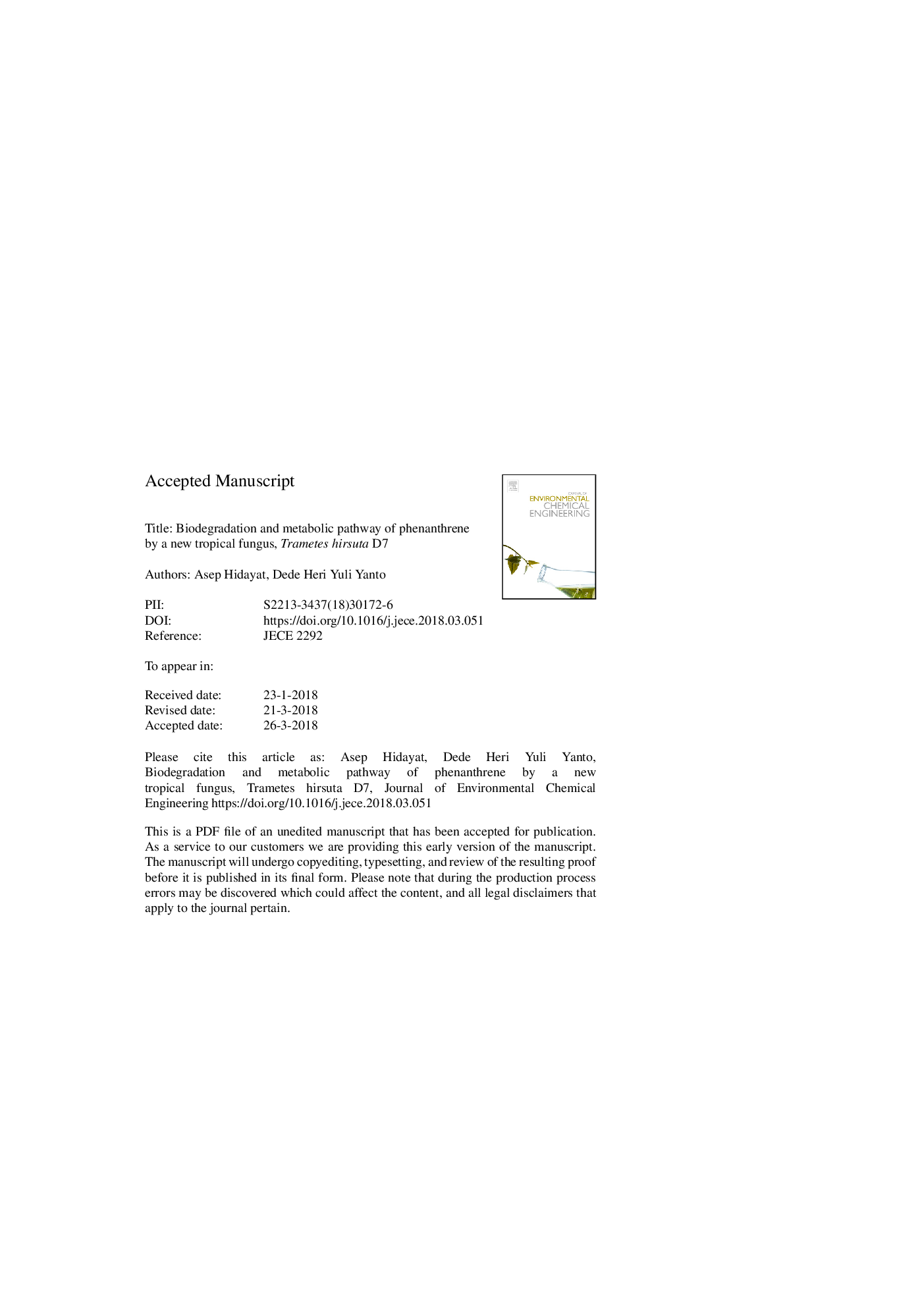| Article ID | Journal | Published Year | Pages | File Type |
|---|---|---|---|---|
| 6664044 | Journal of Environmental Chemical Engineering | 2018 | 17 Pages |
Abstract
The ability of a new isolate tropical fungus Trametes hirsuta D7 to degrade phenanthrene, chrysene, and benzo[a]pyrene (BaP) was investigated in this study. Predicting metabolic pathway was analyzed by the identification of degradation products of phenanthrene using TMS derivatization. Comparison with the NIST-library and the authentic standard were conducted to justify the compounds. The results show that strain D7 was able to degrade phenanthrene, chrysene, and BaP of 0.8%, 0.17%, and 0.46% per mg dry weight of biomass strain D7, respectively. During the metabolism of phenanthrene, five related compounds were detected in the culture. Phenanthrene 9,10-dihydrodiol (I) was formed as an oxidation product of phenanthrene by oxygenation. 2,2â²-Diphenic acid (II) was probably obtained from the oxidation of phenanthrene and 9,10-phenanthrene quinone (oxidation product of phenantrene 9,10-dihydrodiol). Intermediate compound 2,2â²-diphenic acid was then converted to benzoic acid (III) and 4-hydroxybenzoic acid (IV), which is directly converted into 1,2-benzenedicarboxylic acid (V). Inhibitory degradation of phenanthrene after the addition of monooxygenase inhibitor, piperonyl butoxide, confirmed the important role of P450 monooxygenase to initiate the degradation. This study suggests that T. hirsuta D7 has the potential to be used in the bioremediation of PAHs-contaminated environment.
Related Topics
Physical Sciences and Engineering
Chemical Engineering
Chemical Engineering (General)
Authors
Asep Hidayat, Dede Heri Yuli Yanto,
